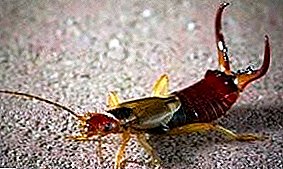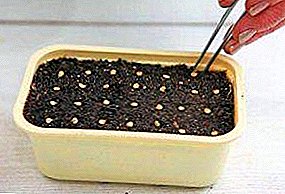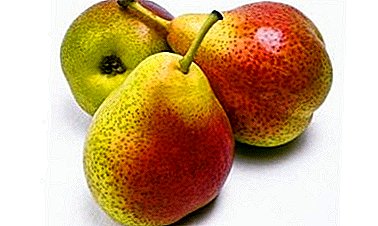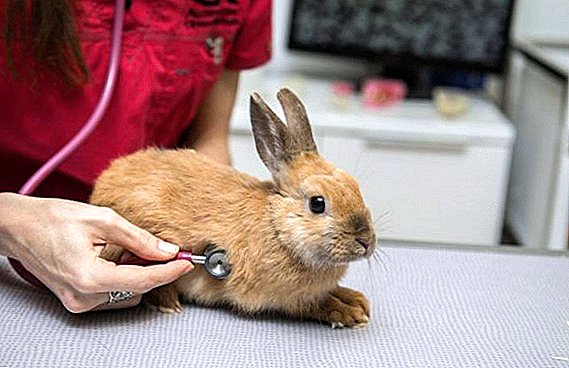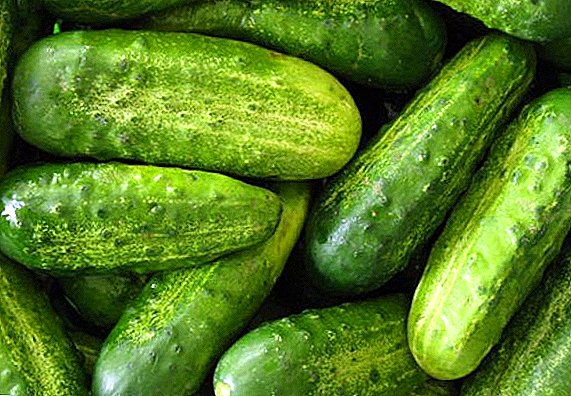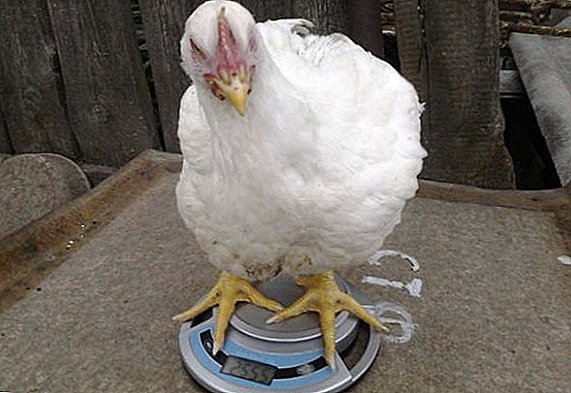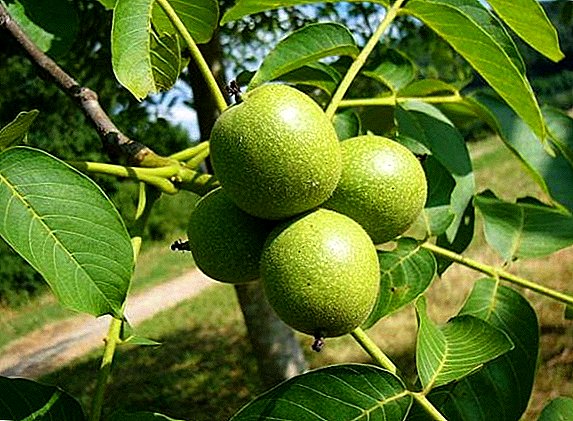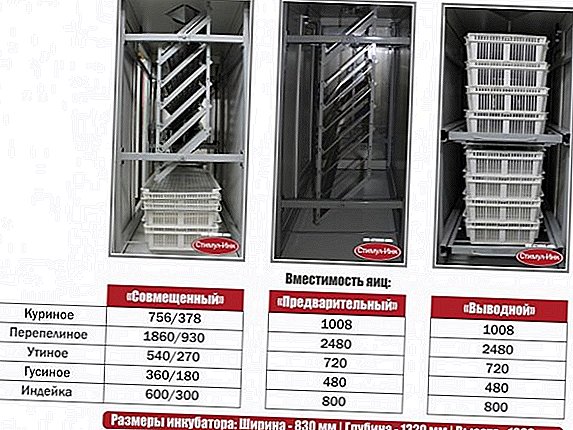 An incubator designed for a large number of eggs takes the poultry farmer to a new, more efficient, level. The use of such units allows not only to get a large number of chickens, but also ensures their good hatchability and, consequently, a stable income. High-quality and productive representative of the range of such devices is the "Stimul-1000". How this unit works, and what are the features of incubation, read in this review.
An incubator designed for a large number of eggs takes the poultry farmer to a new, more efficient, level. The use of such units allows not only to get a large number of chickens, but also ensures their good hatchability and, consequently, a stable income. High-quality and productive representative of the range of such devices is the "Stimul-1000". How this unit works, and what are the features of incubation, read in this review.
Description
Stimul-1000 is intended for breeding poultry - chickens, geese, ducks, quails. The device is controlled by electronic control. The user lays eggs and sets the parameters of the installation, ensuring the development of chicks. Stimul-1000 can be used in households or farms.
Check out the characteristics of the best egg incubators.
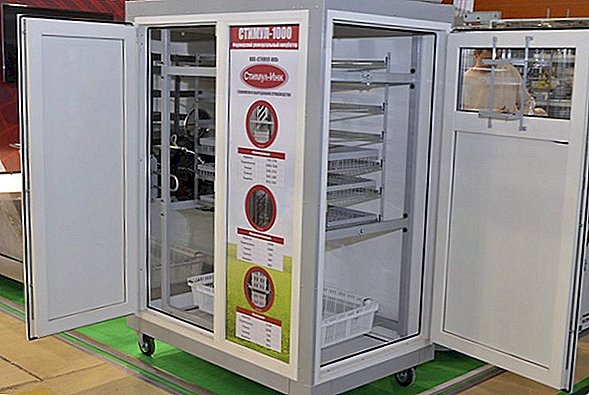 The cabinet-type device has two compartments designed for incubating eggs and hatching young.
The cabinet-type device has two compartments designed for incubating eggs and hatching young.
The model is equipped with:
- turning trays 45 degrees from the plane (automatic);
- water cooling system using a nozzle installed on the ceiling of the chamber;
- ventilation system.
After the program is set, the unit operates in automatic mode. Control over the process is carried out using sensors. There is an overheat protection system. The line of incubators is released by NPO Stimul-Ink.
The company produces, develops and supplies:
- farm and industrial incubators for growing all types of poultry;
- equipment for growing and processing poultry.
 The Stimul-1000 model is presented in three variants of incubators:
The Stimul-1000 model is presented in three variants of incubators:
- "Stimul-1000U" - universal, combined on 756/378 eggs;
- "Stimul-1000V" - hatcher, combined on 1008 eggs;
- Stimul-1000P is a pre-incubator of the combined type for 1008 eggs.
The preliminary unit is designed to incubate eggs from 1 to 18 days. On the 19th day, the eggs are transferred to the trays of the hatchery incubator where chicks are hatched. Combined means that the model can be used both for incubation and for hatching chicks.
Did you know? Australian wild mottled hen does not hatch eggs. The male of this bird builds for them a kind of incubator - a pit with a diameter of 10 m, filled with a mixture of vegetation and sand. Under the influence of the sun vegetation rots and gives the desired temperature. The female lays 20-30 eggs, the male covers them with vegetation and daily measures its temperature with a beak. If it is high, it removes some of the covering material, and if it is low, it reports.
Specifications
Body material - PVC profile. Installation is made of panels. The heat insulator is made of polyurethane foam. The incubation and excretory trays are made of polymer. Mechanical electronic device controls the operation of the device. The rotary mechanism is designed to rotate the trays relative to the original plane at an angle of 45 degrees to the left or right of the axis. The three-blade fan provides air exchange in the installation. The equipment operates from the mains with a voltage of 220 V.  Much attention is paid to the manufacturer of energy-saving technologies. Directly heating lasts no more than 30% of the time from the whole incubation process. Maintaining the temperature inside the chamber is provided by a thermal insulation material - polyurethane foam. If the temperature sensor detects its decrease by 1 degree, the heating will turn on and in a few minutes raise the value to the set one.
Much attention is paid to the manufacturer of energy-saving technologies. Directly heating lasts no more than 30% of the time from the whole incubation process. Maintaining the temperature inside the chamber is provided by a thermal insulation material - polyurethane foam. If the temperature sensor detects its decrease by 1 degree, the heating will turn on and in a few minutes raise the value to the set one.
Did you know? The statistics provided by engineers of service centers for repairing incubators, suggests that expensive imported models break more often and are more difficult to repair than cheap counterparts. The reason is simple - excessive enthusiasm for electronics of Western experts significantly expands the list of failures, which leads to a general replacement of expensive electronic components.
Production characteristics
Incubation trays contain:
- 1008 chicken eggs;
- 2480 - quail;
- 720 duck;
- 480 goose;
- 800 - turkey.
Incubator Functionality
Stimul-1000 is equipped with hatching and hatcher trays. The size of the model: 830 * 1320 * 1860 mm. Works from the usual power supply network. The unit automatically controls the air temperature, humidity, air exchange. The kit includes:
- 6 mesh and 12 cellular incubation trays;
- 3 lead trays.
 The maintained temperature is + 18-39 ° С. The heating of the chamber is performed by a heating element with a power of 0.5 kW. Humidity is regulated through the evaporation of water vapor, which flows through the sprayer. Cooling is provided by a ventilation system. Operating mode maintains temperature and humidity setpoints using sensors.
The maintained temperature is + 18-39 ° С. The heating of the chamber is performed by a heating element with a power of 0.5 kW. Humidity is regulated through the evaporation of water vapor, which flows through the sprayer. Cooling is provided by a ventilation system. Operating mode maintains temperature and humidity setpoints using sensors.
We recommend to learn how to independently make an incubator from the old refrigerator.
The temperature and humidity controller captures the set points. The typical indicators for chicken eggs are as follows:
- temperature - +37 ° C;
- humidity - 55%.
 Incubator control unit
Incubator control unitAdvantages and disadvantages
The advantages of the Stimul-1000 Incubator include:
- the possibility of incubating eggs of different poultry;
- simultaneous incubation of a large number of eggs;
- versatility: incubation and withdrawal in one unit;
- mobility of the model: the presence of the wheels makes it easy to move the structure;
- polyurethane foam perfectly maintains temperature conditions inside the chamber;
- automatic turn of trays and control of ventilation and air moistening;
- good thermal insulation properties of the camera.
Important! The incubator must be protected from power surges in the power grid using a 220 V. uninterruptible power supply unit. The unit equalizes voltage surges and maintains operation of the device during a sudden power outage. If such phenomena are not uncommon in your area, then you need to take care of the presence of a 0.8 kW voltage generator.
Instructions on the use of equipment
The guarantee of a high percentage of chickens is the observance of instructions for the operation of the equipment and the conditions of incubation, which may differ by species of bird.
The device can be placed in any room with room air temperature, i.e. not lower than +16 ° C. The ambient temperature affects the operation of the nodes that support the regime inside the incubator, forcing them to work more intensively. Indoors, fresh air must prevail, since it participates in air exchange inside the installation. It is undesirable for direct sunlight to fall on the incubator. The process of using equipment consists of the following steps:
- device preparation for operation;
- laying eggs;
- incubation;
- hatching chicks;
- maintenance of the unit after hatching.
VIDEO: THE PROCESS OF DISCHARGING CHICKENS IN INCOMATOR "Stimulus-1000"
Preparing the incubator for work
In order for the incubation process to be stable and not dependent on problems in the operation of the power grid, be sure to purchase an electric generator. It will ensure the functioning of the device in the absence of electricity. It is connected to the mains through an uninterruptible power supply unit, the task of which is to smooth out voltage surges.
Check the condition of the power cord. Do not operate the unit with damage to the power cord or a leak in the case. Incubator include and check the operation of the rotary mechanism, ventilation systems and heating in idle mode. Pay attention also to the correctness of the sensor readings. If everything works correctly, the equipment is disconnected from the network and begin to prepare material for the bookmark. If problems are noticed - contact the service center.
Important! It is prohibited to place the incubator in a draft or near heating devices.
In the humidification system pour warm boiled water.  Water is fed through the nozzle
Water is fed through the nozzle
Egg laying
For incubation, clean eggs of approximately the same size are used. This will ensure almost simultaneous hatching. Eggs must be fresh, with a shelf life of not more than 10 days. Copies are checked with an ovoscope before laying, then placed in trays placed on the seaming rack.
Of course, an ovoscope for checking eggs can be purchased at the store, but it will not be difficult to make it yourself.
The density of rows will ensure the safety of eggs when cornering. If after placing in the tray there is a place left - it is laid with foam rubber so as to fix the laying motionless relative to the tray. 
It is useful to learn how to properly disinfect eggs before laying in the incubator.
Then a rack with trays is inserted into the incubator. Using the display and control buttons, the following parameters are set:
- air temperature for incubation inside the chamber;
- humidity;
- egg turning time.
It is not necessary to move or turn the eggs during the incubation process. For you, this will make a rotation device, which rotates all trays simultaneously relative to the horizontal after a specified time. Close the incubator and turn it on. Verify that the device is operating in the specified mode.
We recommend that you read the rules for laying eggs in an incubator.
Incubation
During the incubation process, periodic monitoring of temperature and humidity indicators, as well as the presence of water in the system, is needed. During incubation, eggs are repeatedly controlled with an ovoscope and non-viable (in which the embryo has not started or stopped) are removed. Incubation time (in days):
- chickens - 19-21;
- quails - 15-17;
- ducks - 28-33;
- geese - 29-31;
- turkeys - 28.
Hatching chicks
3 days before the end of the incubation, the eggs are transferred from the incubation trays to the hatches. These trays must not be turned over. Sowing chicks without your intervention. After the baby has hatched, it needs at least 11 hours to dry, only after that it can be taken into the “nursery”. 
Important! If part of the chickens hatched, and someone lags behind, then for them the temperature in the incubator is increased by 0.5 degrees. It speeds up the process.
If the chicken has broken through the shell, quietly squeaks, bites the shell, but does not crawl out - give it about a day and it will cope on its own, just slower than the others. If the chick is restless, then the shell or sheath could stick and interfere with the chicken. In this case, you will need your help: moisten hands with warm water, remove the egg and moisten the film. You do not need to shoot it yourself.
The dried up chickens, which are active, must be taken out of the incubator, so that they do not interfere with others to hatch. At the end of the process, the equipment is washed with a sponge and detergent solution, the trays are dried and set in place.
Device price
The cost of the Stimul-1000 Incubator is about $ 2,800. (157 thousand rubles or 74 thousand UAH). The cost is specified by the managers of the manufacturing company on the website of Stimul-In NPO or on the website of the selling company.
findings
When choosing incubators should be based on your needs and reliability of the purchased unit. Stimul-1000 incubators are distinguished by high quality, 100% compliance with the tasks set, positive user feedback and an average price range for this type of equipment. 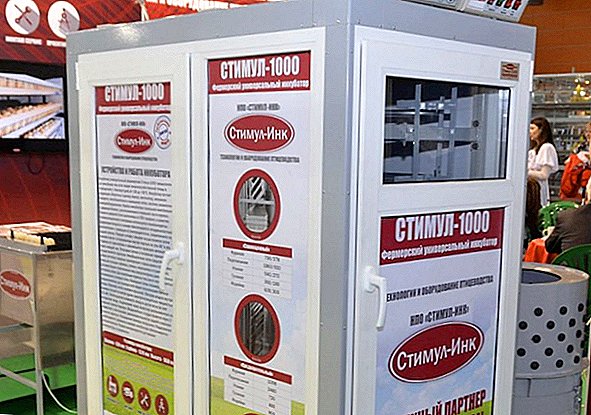 The appearance of the installation and the quality of its materials are not inferior to foreign counterparts, and its cost will pay off faster than imported devices. Incubator accessories can be obtained within a few days, depending on the delivery method and the distance of the region. In addition, in case of any malfunctioning of the equipment, you can always contact the manufacturer’s service center and get advice, which is impossible for European units.
The appearance of the installation and the quality of its materials are not inferior to foreign counterparts, and its cost will pay off faster than imported devices. Incubator accessories can be obtained within a few days, depending on the delivery method and the distance of the region. In addition, in case of any malfunctioning of the equipment, you can always contact the manufacturer’s service center and get advice, which is impossible for European units.
When purchasing an incubator, be sure to pay attention to the properties of the materials from which it is made, and the warranty of the manufacturer for the equipment. This will help you to invest your money rationally.
Reviews





